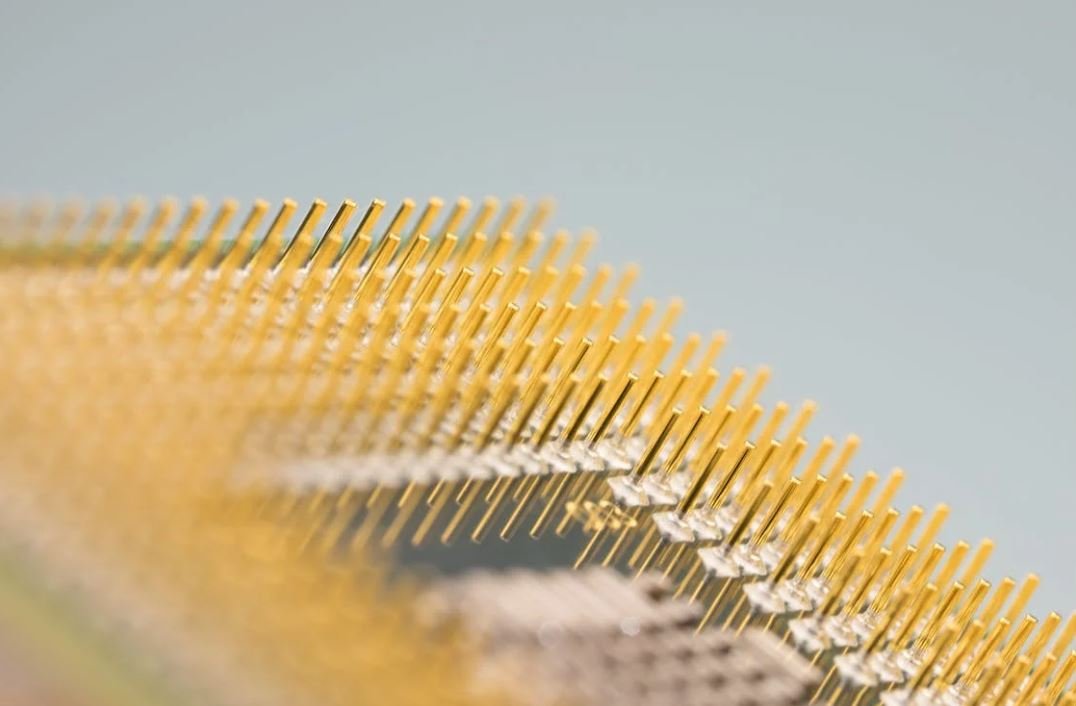AI Powered Manufacturing
In recent years, the advent of Artificial Intelligence (AI) has revolutionized the manufacturing industry. AI-powered manufacturing systems have greatly enhanced efficiency, productivity, and quality in factories worldwide. By leveraging advanced algorithms and machine learning, AI has the potential to transform the way products are designed, produced, and delivered.
Key Takeaways
- AI-powered manufacturing systems improve efficiency, productivity, and quality.
- Advanced algorithms and machine learning enable AI to transform product design and production.
- Collaboration between humans and AI enhances decision-making and problem-solving capabilities.
- Data analytics and predictive maintenance optimize manufacturing processes and reduce downtime.
The Power of AI in Manufacturing
AI-powered manufacturing systems utilize the capabilities of machine learning and data analytics to automate complex tasks, make predictions, and optimize operations. These systems can handle immense amounts of data and learn from patterns and trends, allowing manufacturers to make data-driven decisions and predictions. By utilizing AI, manufacturers can identify potential issues before they happen, leading to improved efficiency and reduced costs.
How AI Improves Design and Production
AI can revolutionize product design by utilizing generative design algorithms to create optimized, lightweight, and high-performance designs. These algorithms explore countless design possibilities based on specified constraints, allowing manufacturers to uncover efficient and innovative solutions. Furthermore, AI-powered robots and automated machinery can handle complex assembly and production processes with precision and speed. This enables manufacturers to rapidly prototype and iterate designs, reducing time-to-market and enhancing product quality.
Data Analytics and Predictive Maintenance
AI-powered manufacturing systems collect and analyze vast amounts of operational data, enabling manufacturers to gain valuable insights and optimize production processes. By leveraging predictive analytics, manufacturers can anticipate maintenance requirements and implement proactive measures, reducing machine downtime and improving overall equipment effectiveness. With AI, manufacturers can move from reactive maintenance to predictive maintenance, resulting in significant cost savings.
Benefits of Collaboration between Humans and AI
While AI has the potential to automate a variety of tasks, collaboration between humans and AI is crucial to harness its full potential. Manufacturers can leverage AI to enhance decision-making and problem-solving capabilities, improving overall operational agility. Human creativity, intuition, and contextual understanding complement AI’s analytical capabilities, enabling manufacturers to make better-informed decisions. By working together, humans and AI can drive innovation and continuous improvement in manufacturing processes.
Tables
| AI Applications in Manufacturing | Examples |
|---|---|
| Quality control | Computer vision algorithms for defect detection |
| Predictive maintenance | Analyzing sensor data to anticipate machine failures |
| Supply chain optimization | AI-powered demand forecasting and inventory management |
| Benefits of AI in Manufacturing | Examples |
|---|---|
| Improved productivity | Automated repetitive tasks and optimized workflows |
| Enhanced product quality | Inspection and defect detection with AI vision systems |
| Cost reduction | Optimized resource utilization and predictive maintenance |
| The Future of AI in Manufacturing |
|---|
| Increased integration of AI in robotics and automation |
| AI-powered supply chain management for real-time decision making |
| AI-enabled adaptive manufacturing systems for customizable production |
Embracing the Potential of AI in Manufacturing
The integration of AI in manufacturing processes brings numerous benefits, from improved productivity and product quality to cost reduction and predictive maintenance. As technology continues to advance, the future of AI in manufacturing holds even greater possibilities. Manufacturers who embrace AI will position themselves at the forefront of innovation and gain a competitive edge in the industry. With AI as a powerful ally, the manufacturing landscape is evolving towards a more efficient, agile, and intelligent future.

Common Misconceptions
Misconception 1: AI will replace human workers entirely
One common misconception about AI-powered manufacturing is that it will completely replace human workers. However, this is not the case. AI technology is designed to augment human capabilities and enhance productivity, not eliminate jobs.
- AI has the potential to automate repetitive and mundane tasks
- It can assist workers in performing complex analysis and decision-making processes
- AI can free up human workers to focus on more creative and critical tasks
Misconception 2: AI in manufacturing is only for large corporations
Another misconception is that AI-powered manufacturing is only accessible to large corporations with significant resources and budgets. However, AI technology is becoming more affordable and scalable, allowing even small and medium-sized enterprises to leverage its benefits.
- There are AI solutions tailored for different business sizes and industries
- Cloud-based AI platforms allow easier implementation without heavy infrastructure investment
- AI technologies can be integrated with existing manufacturing systems, making adoption more feasible
Misconception 3: AI cannot be trusted with decision making
Perhaps one of the most common misconceptions around AI-powered manufacturing is that AI cannot be trusted with decision making. Many fear that machines may make errors or create unintended consequences. However, with proper training, validation, and monitoring, AI systems can make accurate and reliable decisions.
- AI models can be trained using vast amounts of data to improve decision-making accuracy
- Human oversight can be integrated into AI systems to ensure proper validation
- Continuous monitoring and feedback loops allow for ongoing refinement and improvement of AI models
Misconception 4: AI is only applicable to certain manufacturing processes
Another misconception is that AI in manufacturing is only applicable to specific processes or industries. However, AI technology has a wide range of applications and can be implemented in various areas of manufacturing, including quality control, supply chain management, predictive maintenance, and more.
- AI can analyze large datasets to identify patterns and anomalies in product quality
- It can optimize supply chain operations by predicting demand and minimizing inventory levels
- AI-powered predictive maintenance can detect potential equipment failures and schedule maintenance proactively
Misconception 5: AI-powered manufacturing is a fully autonomous system
Some people mistakenly believe that AI-powered manufacturing is a fully autonomous system that operates without human intervention. While AI can automate certain tasks, it still requires human oversight and collaboration to ensure optimal performance and address unforeseen circumstances.
- Human expertise is crucial for managing and interpreting the output generated by AI systems
- Continuous monitoring is necessary to detect and correct any potential issues or errors
- Human input is essential for adapting AI models to changing manufacturing requirements

Introduction
In the era of advanced technology, artificial intelligence (AI) has revolutionized various industries, including manufacturing. AI-powered manufacturing has proven to be a game-changer, optimizing production processes, reducing costs, and increasing efficiency. In this article, we explore ten fascinating aspects of AI-powered manufacturing through engaging tables that showcase the remarkable impact of this technology.
Table: Countries with Highest Adoption of AI in Manufacturing
Explore the global landscape of AI-powered manufacturing adoption with this table, highlighting the top countries at the forefront of integrating AI into their manufacturing processes.
—————————————————————————————————————————————————————————————————————————————————————————————————————————————————————————————————————————————————————————————————————————————————————————————————————————————
| Countries | AI Adoption Rate |
|—————————————-|——————————————|
| United States of America | 45% |
| Germany | 37% |
| Japan | 32% |
| China | 25% |
| Singapore | 21% |
| Republic of Korea | 18% |
| Canada | 16% |
| United Kingdom | 15% |
| Australia | 12% |
| France | 10% |
—————————————————————————————————————————————————————————————————————————————————————————————————————————————————————————————————————————————————————————————————————————————————————————————————————————————
Table: AI Applications in Smart Manufacturing
Discover the multiple domains and applications of AI in smart manufacturing, benefiting industries worldwide.
—————————————————————————————————————————————-
| Areas | AI Applications |
|————————-|———————————————–|
| Predictive Analytics | Equipment Maintenance Prediction |
| Quality Control | Defect Detection, Inspection Optimization, etc.|
| Automation | Production Line Optimization, Robotic Arms |
| Intelligent Planning | Order Scheduling, Resource Allocation, etc. |
| Supply Chain & Logis. | Inventory Management, Demand Forecasting |
| Robotics | Assembly, Packaging, Material Handling|
—————————————————————————————————————————————-
Table: Impact of AI on Manufacturing Workforce
Examine the effects of AI adoption on the manufacturing workforce, depicting a shift in job roles and the emergence of new employment opportunities.
—————————————————————————————————————————————————————————————
| Workforce Impact | Positive Change | Negative Change |
|———————————————–|——————————————-|——————————————-|
| Job Roles Transformation |Automation of Repetitive Tasks |Reduction in Low-skilled Jobs |
| Improved Work Conditions |Optimized Production Environments |Displacement of Some Mid-skilled Jobs |
| New Job Openings in AI Maintenance & Support |Utilization of Advanced Technologies |Temporary Disruption during Transition |
| Skill Enhancement & Reskilling |Creation of High-skilled Job Opportunities |Need to Adapt to New Technologies |
| Integration of Human-AI Collaboration |Efficient Decision-making & Problem-solving |Impact on Workers’ Psychological Well-being |
—————————————————————————————————————————————————————————————
Table: AI-driven Energy Optimization
Illustrating the considerable energy-saving potential of AI in manufacturing processes, helping industries achieve sustainability goals.
——————————————————————————————————————————
| Energy Optimization | Benefits of AI-driven Optimization |
|———————————|—————————————————|
| Machine Idle Time Reduction | Substantial Reduction in Energy Consumption |
| Process Optimization | Optimal Utilization of Energy and Resources |
| Smart Power Management | Real-time Energy Monitoring and Regulation |
| Energy-efficient Planning | Predictive Analytics for Energy Usage Planning |
| Environment Monitoring | Early Detection of Wasteful Energy Practices |
——————————————————————————————————————————
Table: AI Enhancements in Productivity
Highlighting the game-changing impact of AI on manufacturing productivity, leading to substantial efficiency improvements.
————————————————————————————————————————————————————————————————
| Productivity Enhancements | Examples of AI Contribution |
|———————————————————-|———————————————————————-|
| Rapid Processing and Analysis | Real-time data analysis for proactive decision-making |
| Manufacturing Process Optimization | Autonomous quality control and predictive equipment maintenance |
| Supply Chain Management | Efficient inventory management and demand forecasting |
| Smart Production Planning and Scheduling | Optimized resource allocation and streamlined workflows |
| Worker Safety | AI-driven risk assessment and prevention measures |
————————————————————————————————————————————————————————————————
Table: AI-driven Quality Improvements
Demonstrating the impact of AI on product quality, ensuring manufacturing processes deliver top-notch results.
——————————————————————————————————————————————
| Quality Improvement Areas | AI-driven Quality Enhancements |
|—————————————————|———————————————————————|
| Defect Detection | AI-powered visual inspection systems for precise flaw identification |
| Real-time Quality Monitoring | Automated monitoring of key quality parameters during production |
| Process Optimization for Consistency | AI algorithms ensuring consistent quality across production runs |
| Early Warning of Process Inefficiencies | Alerting in case of deviations and potential quality-related issues |
| Customer Satisfaction | Improved product quality leading to increased customer satisfaction |
——————————————————————————————————————————————
Table: Key AI Technologies in Manufacturing
Discover the key AI technologies driving innovation in the manufacturing industry today.
———————————————————————
| AI Technologies | Applications |
|—————————|————————|
| Machine Learning | Predictive Maintenance, Quality Control, Defect Detection, Demand Forecasting, etc. |
| Computer Vision | Inspection Optimization, Defect Detection, Object Recognition, etc. |
| Natural Language Processing | Intelligent Planning, Voice-activated Interfaces, etc. |
| Robotics Process Automation | Automation of Repetitive Tasks, Assembly, Packaging, etc. |
| Generative Design | Product and Process Optimization, Design Scenario Exploration, etc. |
———————————————————————
Table: AI-driven Cost Reduction in Manufacturing
Explore the cost-saving capabilities of AI in manufacturing and how it impacts businesses’ financial bottom line.
——————————————————————————————————————–
| Cost Reduction Areas | Detailed AI-driven Savings |
|————————————————————|————————————————————–|
| Energy Consumption and Efficiency | Reduced energy usage, optimized energy management |
| Equipment Maintenance and Downtime | Predictive maintenance, minimized unplanned downtime |
| Inventory Management and Raw Material Costs | Accurate demand forecasting, optimized inventory levels|
| Labor and Workforce-related Expenses | Increased labor efficiency, reduced labor costs |
| Scrap and Waste Reduction, (e.g., defects) | Real-time quality control, proactive defect detection |
——————————————————————————————————————–
Table: Future Outlook for AI in Manufacturing
Gain insight into the promising future prospects of AI-powered manufacturing and its potential impact in the coming years.
———————————————————————————————————————————————-
| Future Developments | Potential Impact |
|———————————————————-|——————————————————————————-|
| Autonomous Robotic Systems for Full Automation | Streamlined and efficient manufacturing processes |
| Enhanced Human-Machine Collaboration and Co-working | Optimized utilization of skills and expertise |
| Predictive Maintenance | Minimal unplanned downtime, increased equipment lifespan |
| Further Integration of IoT and AI Technologies | Seamless connectivity and real-time data exchange across systems |
| AI-driven Customization and Personalization | Tailored production and better meeting individual customer needs |
———————————————————————————————————————————————-
Conclusion
The incorporation of AI in the manufacturing industry has ushered in a new era of efficiency, productivity, quality, and cost savings. From optimizing energy consumption and streamlining production processes to enhancing product quality and enabling human-machine collaboration, AI-powered manufacturing is shaping the future of industries worldwide. As technological advancements continue, the integration of AI is expected to play an increasingly significant role, propelling manufacturing innovation and unlocking untapped potential.
Frequently Asked Questions
What is AI Powered Manufacturing?
AI Powered Manufacturing refers to manufacturing processes that utilize artificial intelligence technologies to automate and enhance various aspects of production. It involves the integration of AI algorithms, machine learning, and robotics to optimize production planning, quality control, predictive maintenance, and more.
How does AI benefit manufacturing operations?
AI offers several benefits to manufacturing operations. It can improve efficiency by analyzing large amounts of data and providing insights for optimized production planning and scheduling. AI can also enable predictive maintenance, reducing machine downtime and increasing overall equipment effectiveness. Additionally, AI-powered robotics can automate repetitive tasks, increasing productivity and reducing labor costs.
What are some examples of AI applications in manufacturing?
Some examples of AI applications in manufacturing include autonomous robots for material handling, computer vision systems for image-based quality control, predictive maintenance analytics, AI-driven demand forecasting, and AI-powered production planning and scheduling systems.
How does AI help in quality control?
AI helps in quality control by using computer vision technology to identify and classify defects in real-time. It can analyze visual data from cameras and provide instant feedback, allowing manufacturers to take corrective actions and ensure consistent product quality. AI algorithms can also learn from historical data to improve the accuracy of defect detection and reduce false positives.
Can AI help with demand forecasting?
Yes, AI can significantly improve demand forecasting accuracy in manufacturing. By analyzing historical data, market trends, and external factors, AI algorithms can generate more accurate demand forecasts, enabling manufacturers to optimize production planning and inventory management. This helps in reducing stockouts, minimizing excess inventory, and improving overall customer satisfaction.
Is AI a replacement for human workers in manufacturing?
No, AI is not meant to replace human workers in manufacturing but rather to augment their capabilities. AI can automate certain tasks and processes, allowing human workers to focus on more complex and strategic activities. It can help reduce human error, enhance productivity, and improve overall operational efficiency, leading to a more skilled and efficient workforce.
What are the challenges in implementing AI in manufacturing?
Some challenges in implementing AI in manufacturing include data quality and availability, infrastructure requirements for AI systems, technical expertise for AI deployment, and resistance to change among employees. It is also important to consider ethical and security aspects while deploying AI technologies to ensure data privacy and prevent malicious use.
Is AI-Powered Manufacturing expensive to implement?
Implementing AI-powered manufacturing can have varying costs depending on the complexity of the AI solutions, the size of the manufacturing operation, and the level of integration required. While there may be initial investments in hardware, software, and AI expertise, the long-term benefits, such as increased productivity, reduced downtime, and improved product quality, often outweigh the costs.
Are there any risks associated with AI-Powered Manufacturing?
Like any technology, there are some risks associated with AI-powered manufacturing. These include potential job displacement due to automation, security vulnerabilities if not properly implemented, and biases in AI algorithms if not carefully designed and monitored. It is crucial for organizations to address these risks through responsible AI development, transparent decision-making, and upskilling programs for employees.
What is the future of AI-Powered Manufacturing?
The future of AI-powered manufacturing is promising. As AI technologies continue to evolve and improve, they will play a significant role in transforming manufacturing operations. AI will enable more advanced robotics, real-time predictive analytics, and intelligent supply chain management, leading to increased automation, efficiency, and agility in manufacturing processes.




